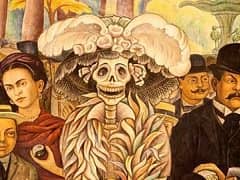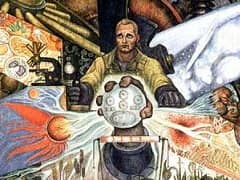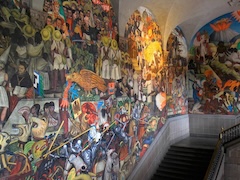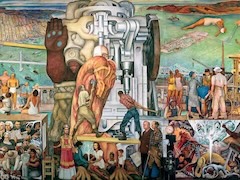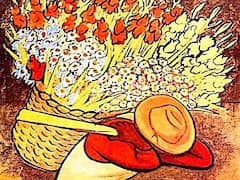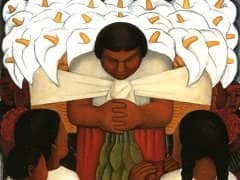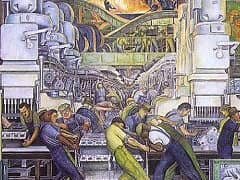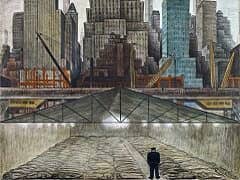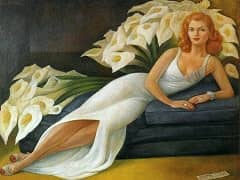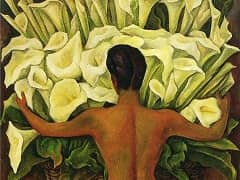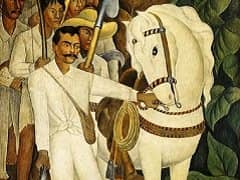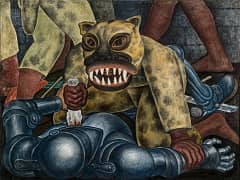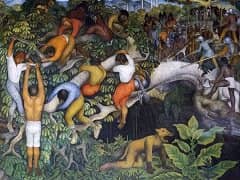Flower Vendor (Vendedora de Flores) by Diego Rivera
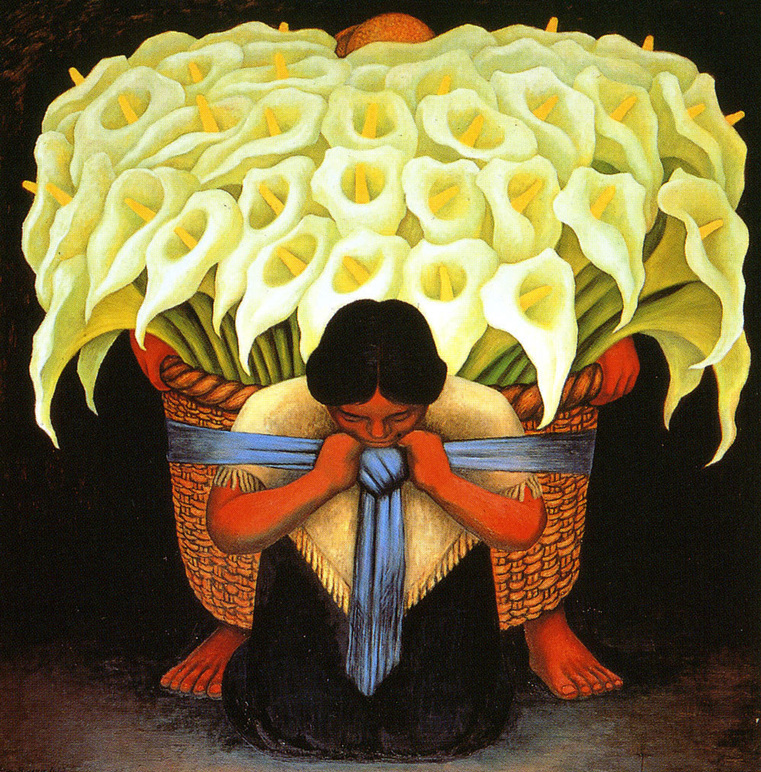
Indigenous vendors with oversized bundles of lilies are part of a recurring theme in Diego Rivera's work. His first such painting, Dia de Flores dates to 1925. He continued his flower vendor series through the 1940s. One of his best-known renditions is Vendedora de Flores, or The Flower Vendor, from 1942. Rivera's works appear simple at first glance, but The Flower Vendor is rife with symbolism.
One of the striking similarities among Rivera's flower seller paintings is the anonymity of the human figures. In the 1942 work, the figure is facing forward, yet she bows her head and closes her eyes. It looks like she is steeling herself to shoulder a heavy burden. The huge bundle of oversized lilies dwarfs her human figure.
In some of his other flower seller paintings, the vendor turns away so only her back is visible. She embraces the monstrous yet beautiful bouquet. In these depictions, too, the women are kneeling before the lilies. Because their faces are invisible, they do not have individual identities. They symbolize their people.
The light-hued lilies contrast with the darker tones in the scenes of flower vendors. Rivera paints his lilies white, greenish-white or bright yellow. Both the size and brightness of the flowers overpower the human figures.
Symbolism in Rivera's Flower Seller Series
In one sense, the domination of the flowers represents the domination of the upper classes over the poorest classes. The vendors bow down to and serve those with the money to buy such luxury items.
In another sense, the lilies symbolize death. They are a common funeral flower. As such, Rivera may be juxtaposing the blossoming of the present with the dying traditions of the past.
The Unique Detail in "Vendedora de Flores"
Unlike most of his other works in the series, Rivera's Vendedora de Flores of 1942 shows two figures rather than one. In the foreground, the vendor prepares to shoulder the large basket of lilies. In the background, a partially concealed figure grasps the basket, ready to help her lift it up.
By including the hidden figure, Rivera may be showing how these people help one another with the everyday difficulties of their lives. Perhaps the hidden figure is the artist himself, who revitalizes Mexico's past with his paintings and murals. In so doing, Rivera lifts up the peasants' culture from the shadows into the light.

